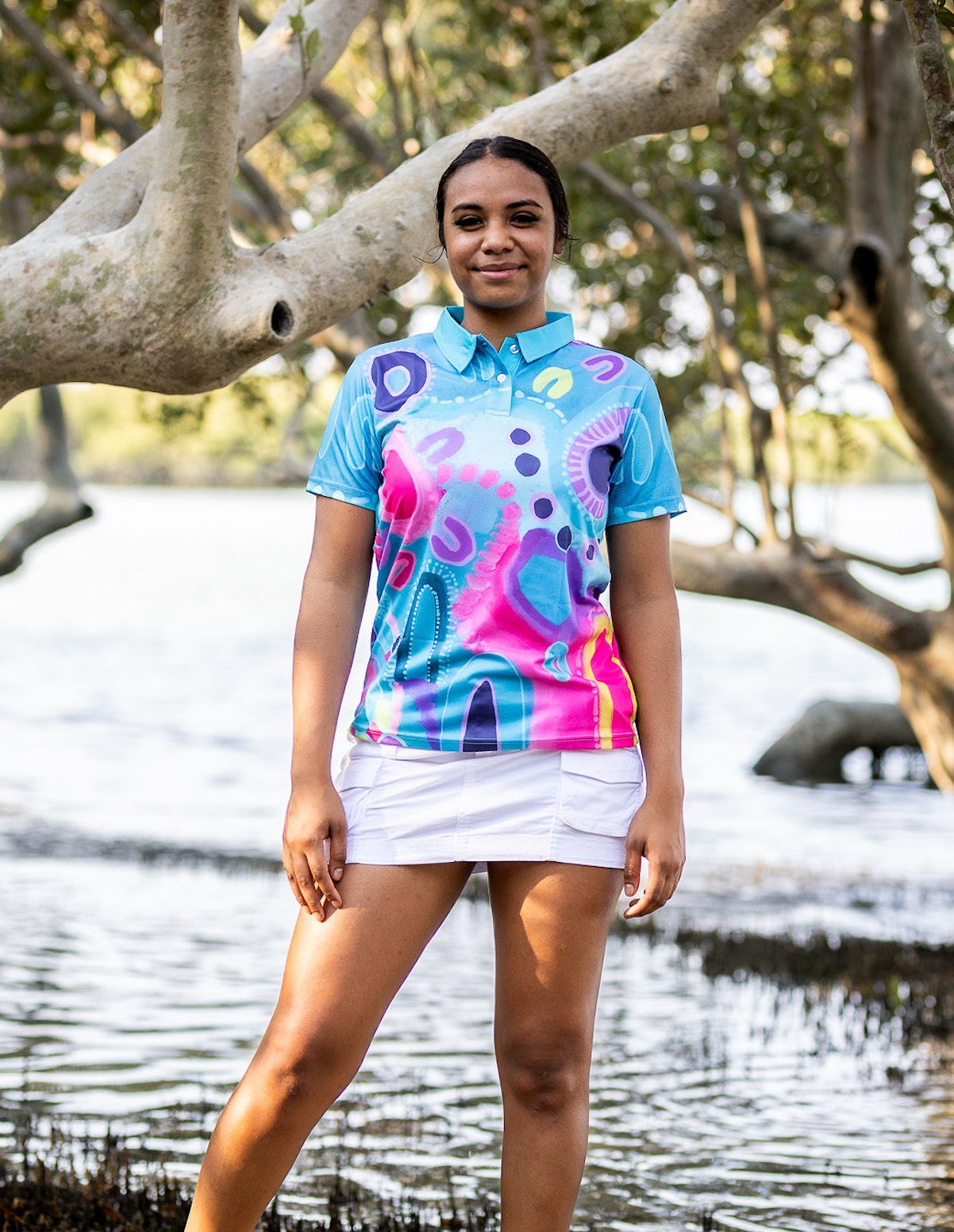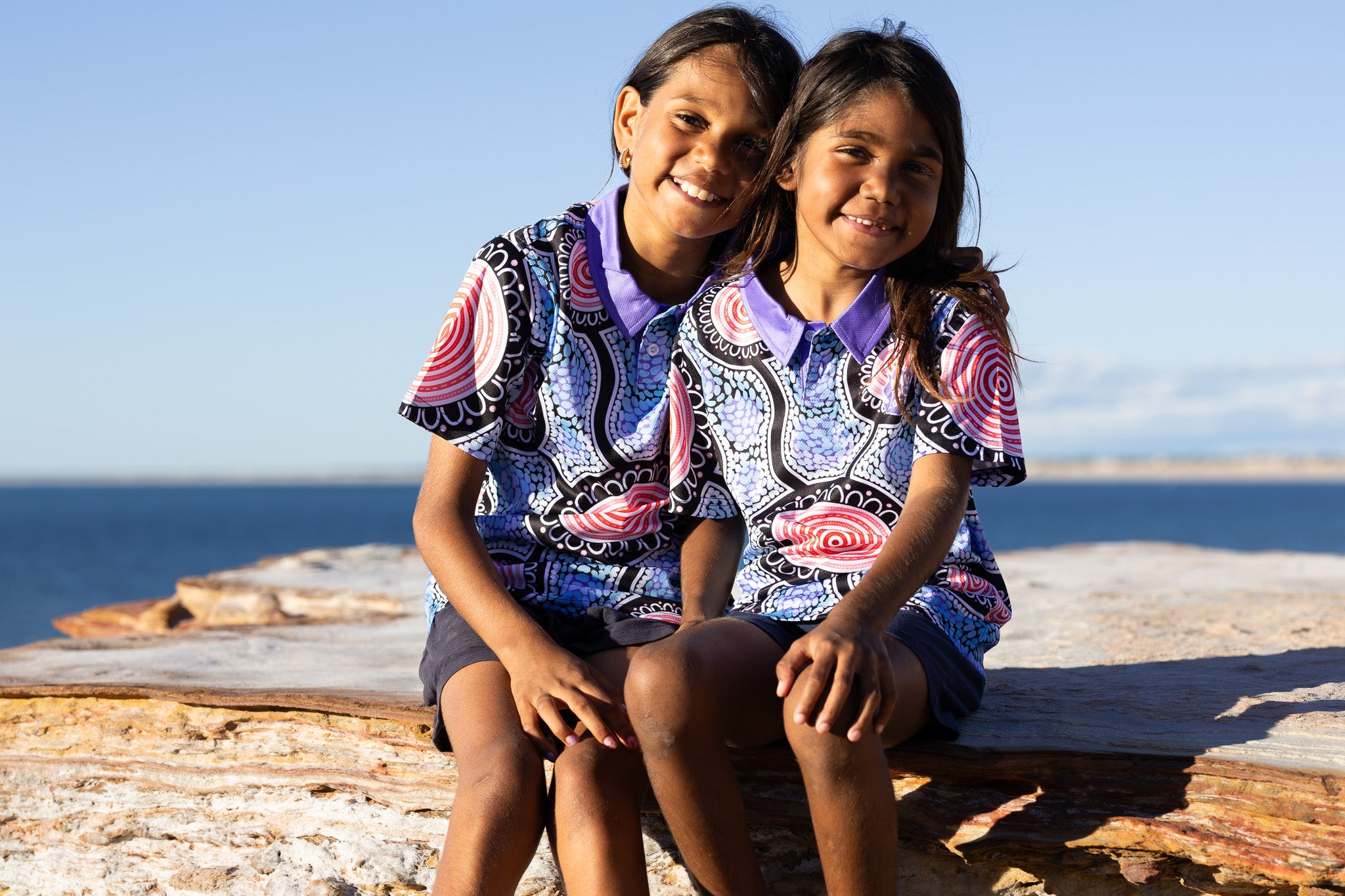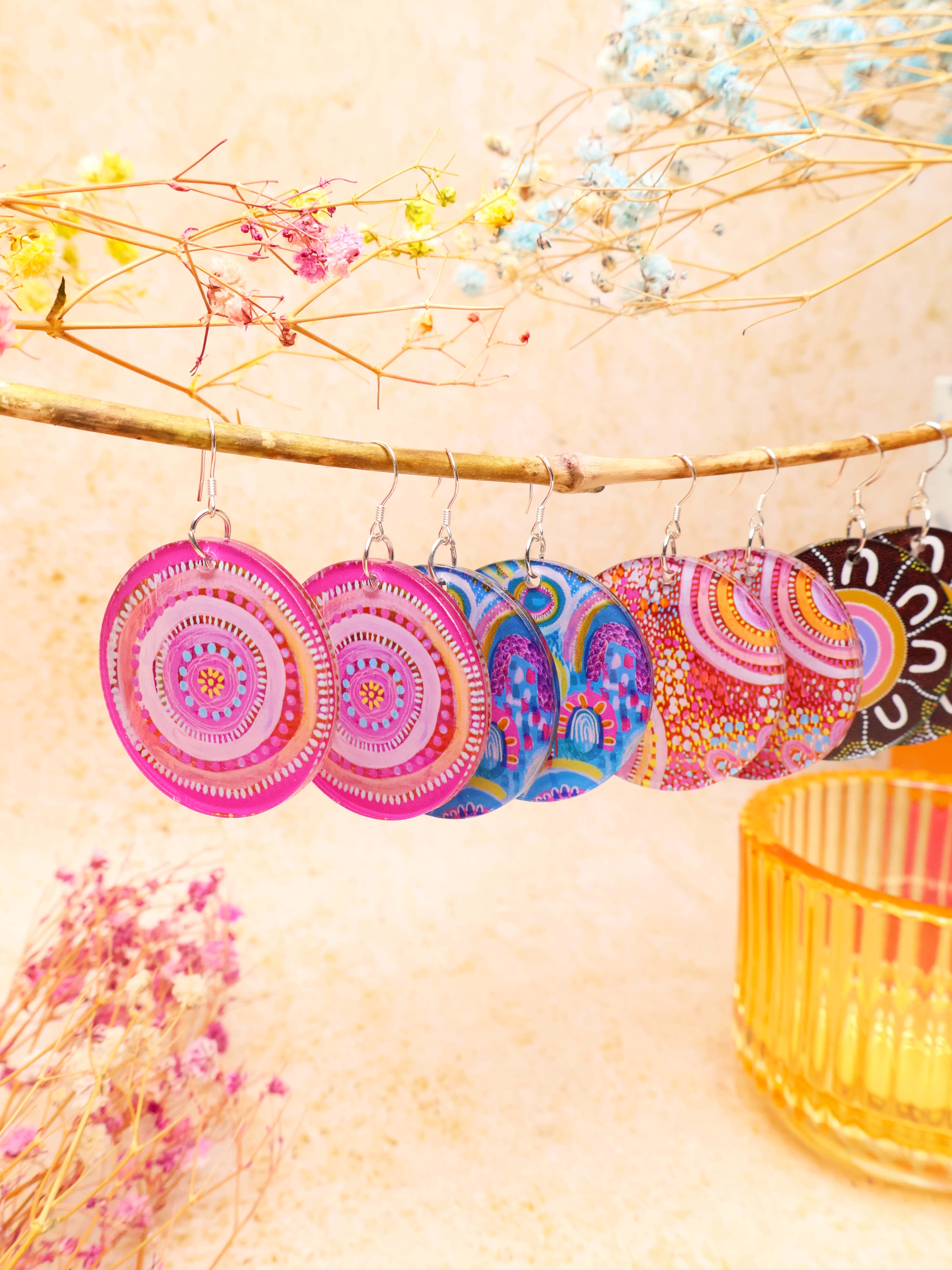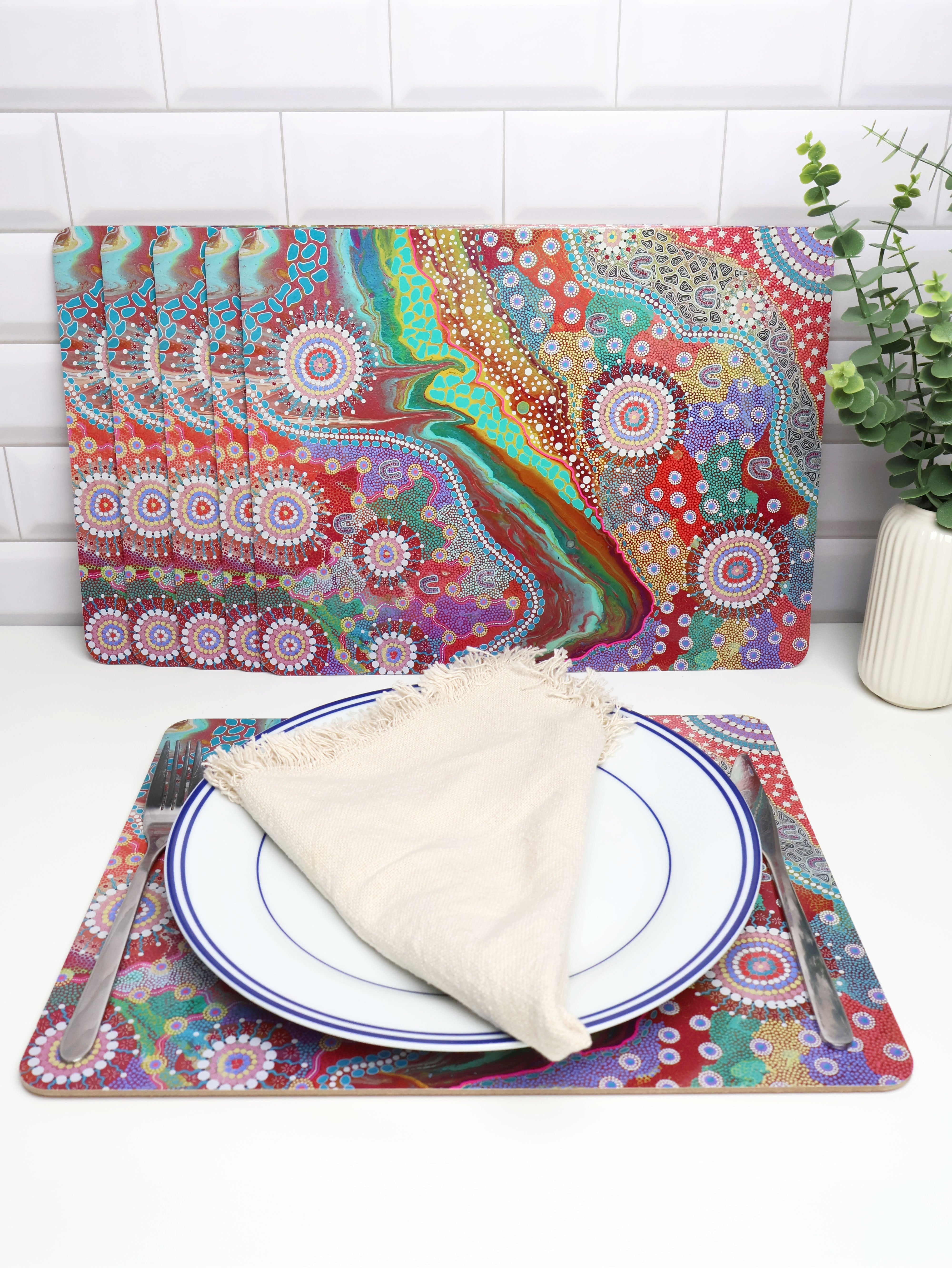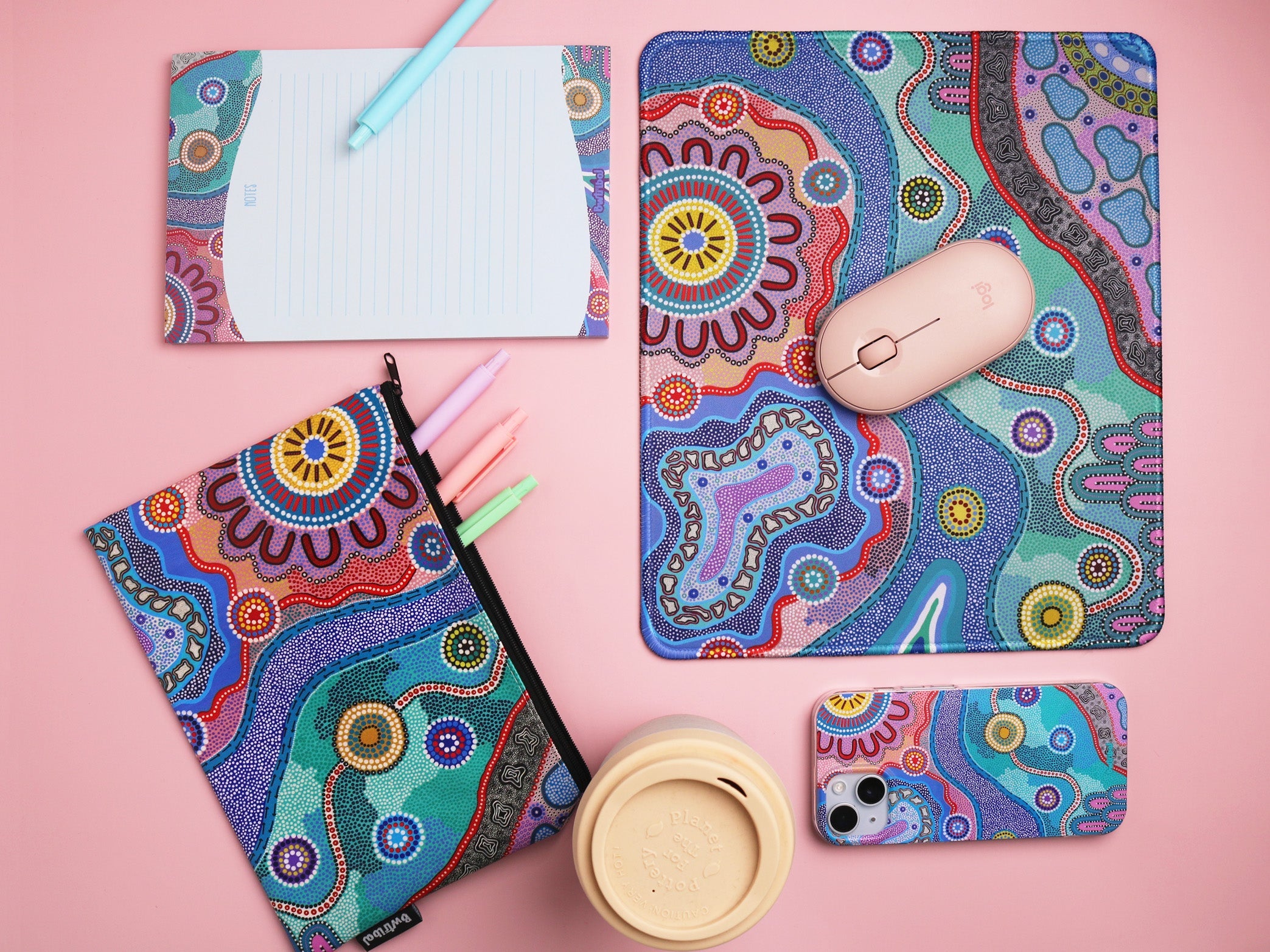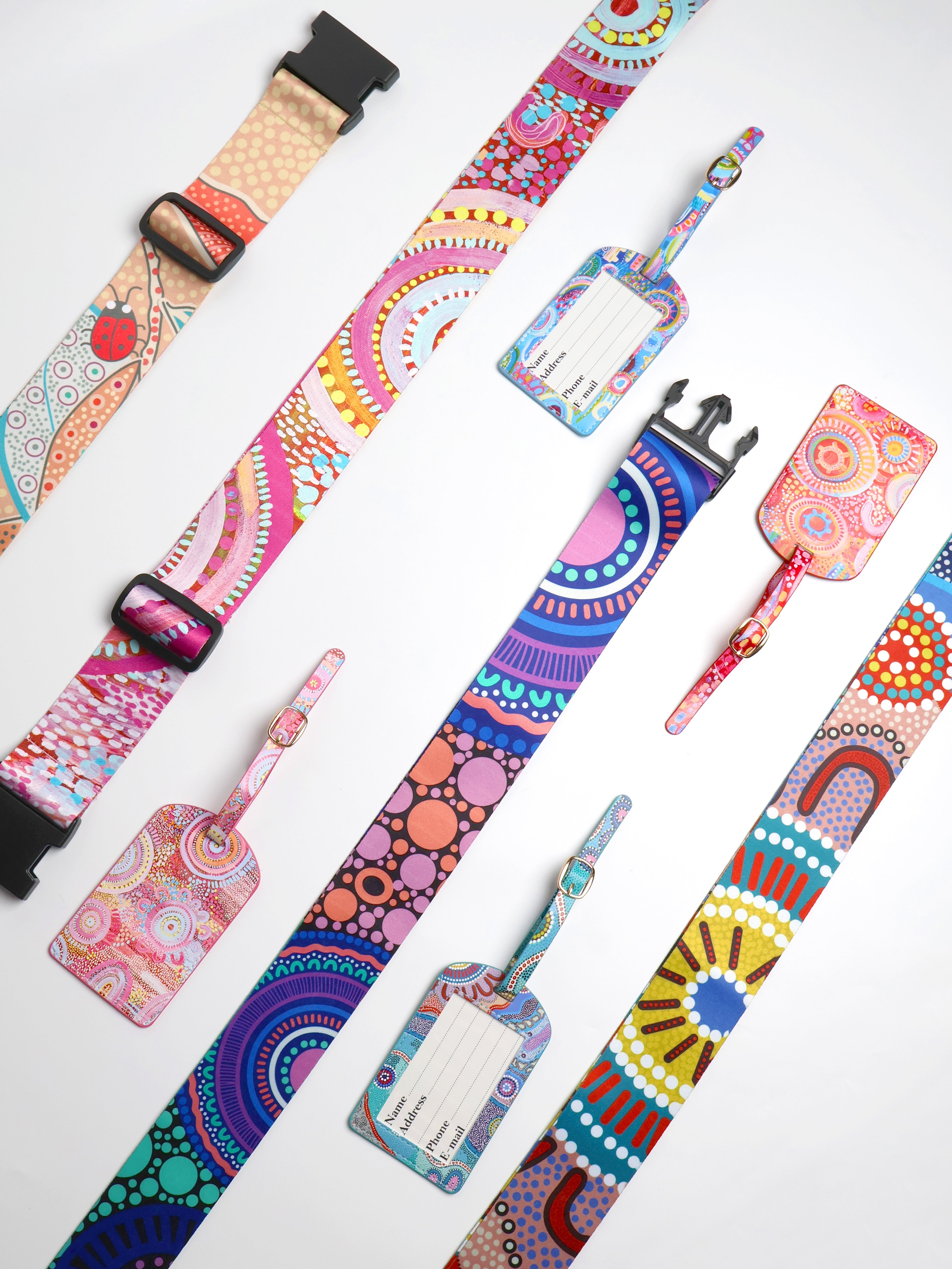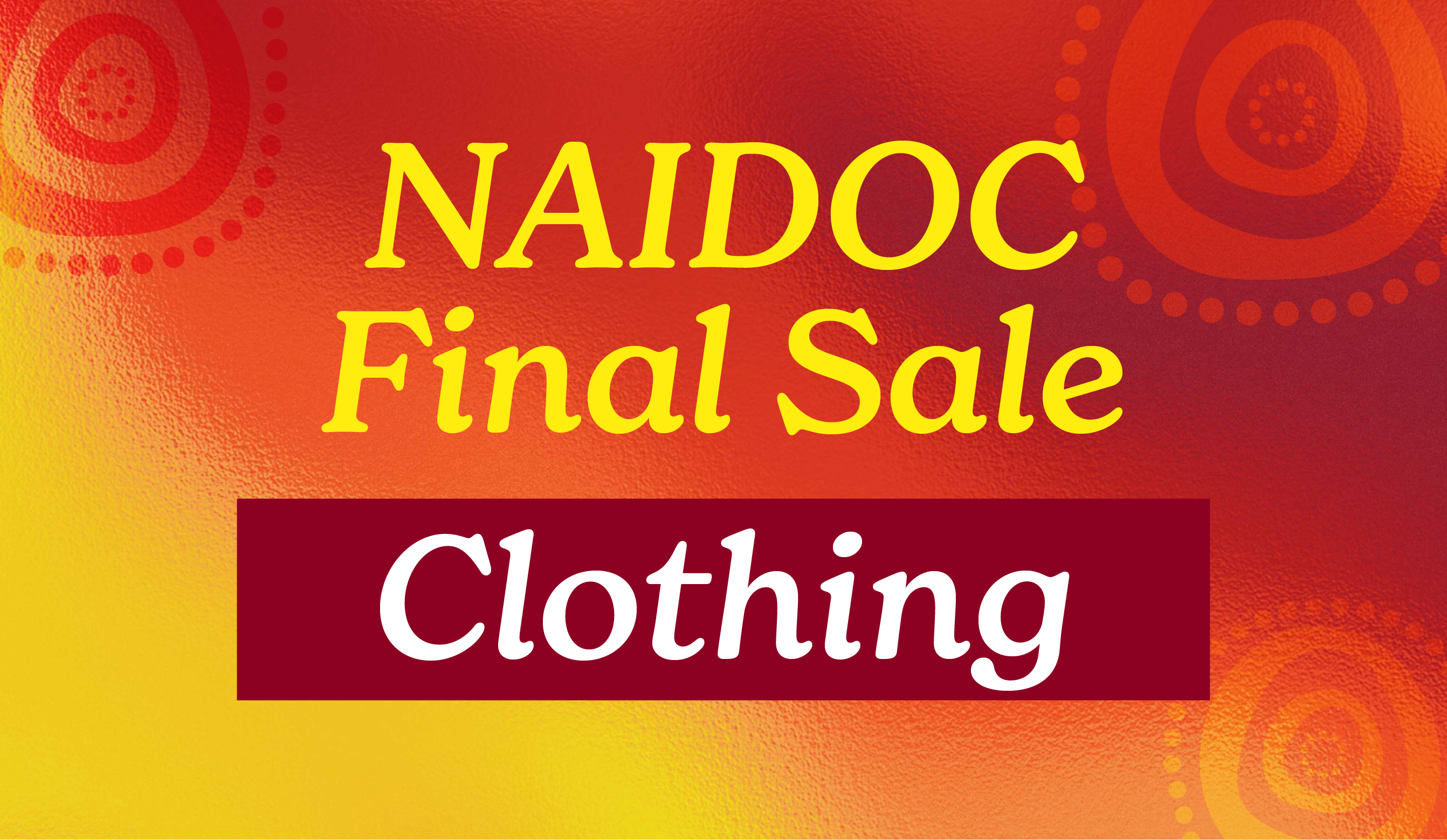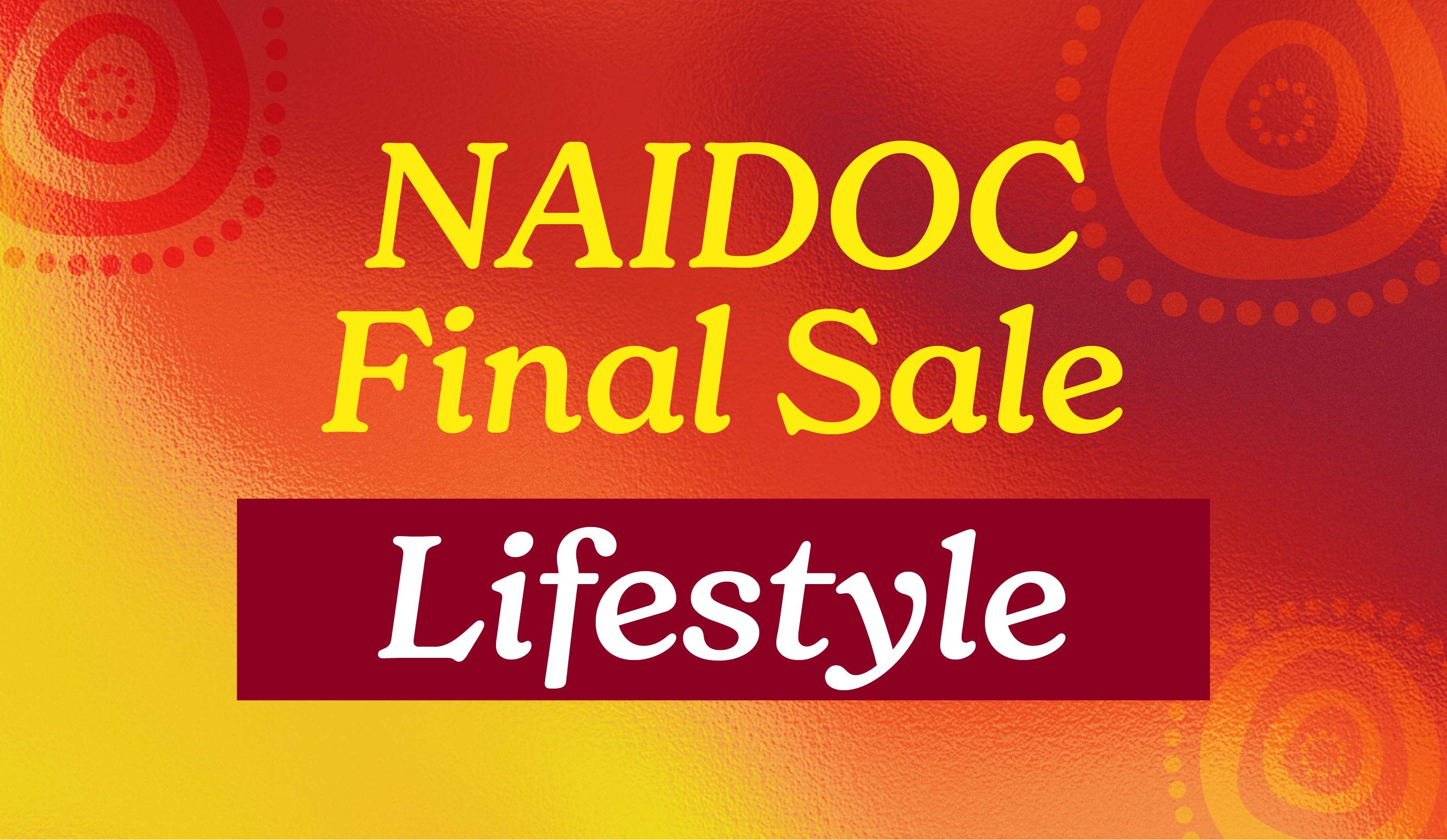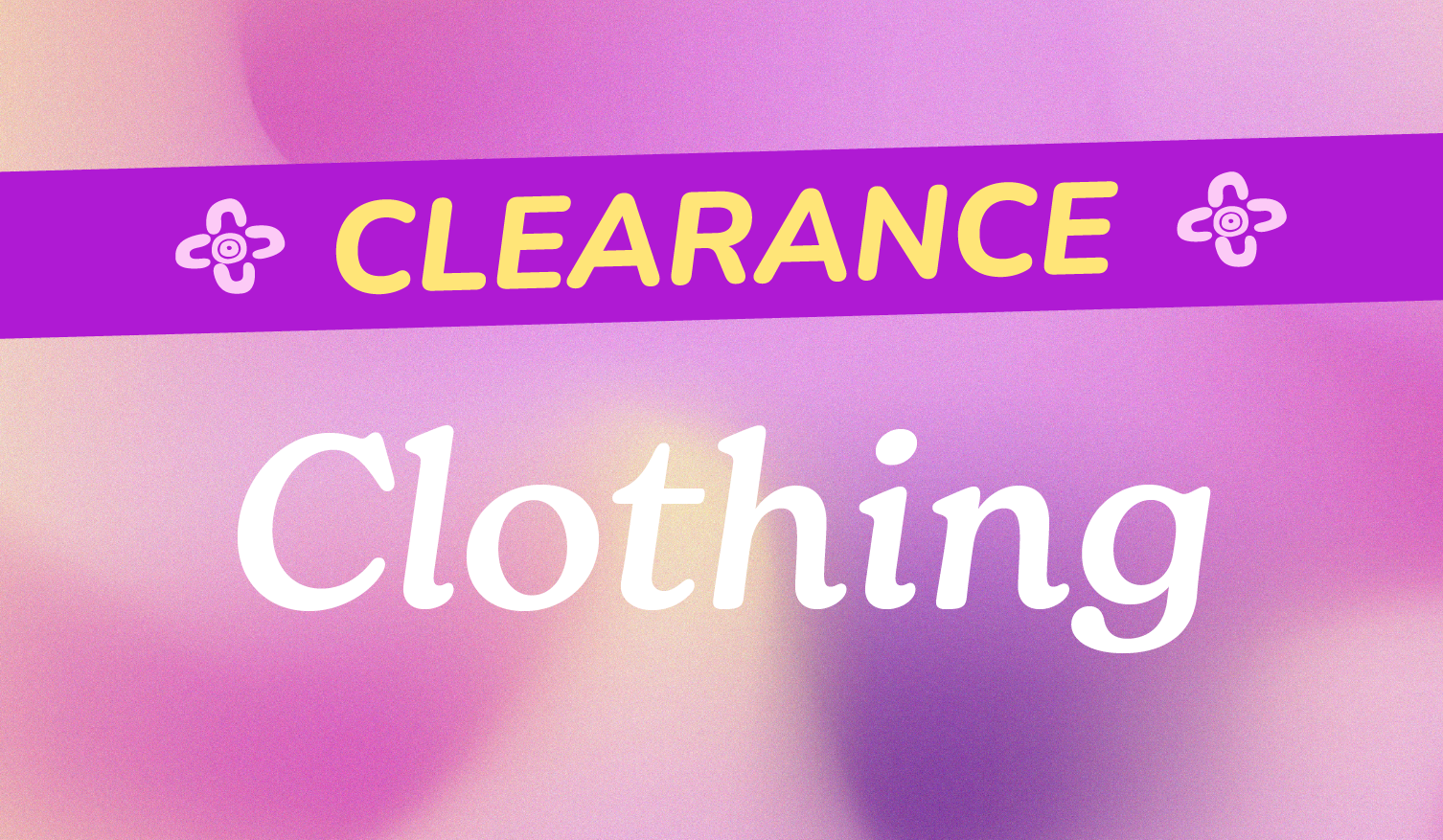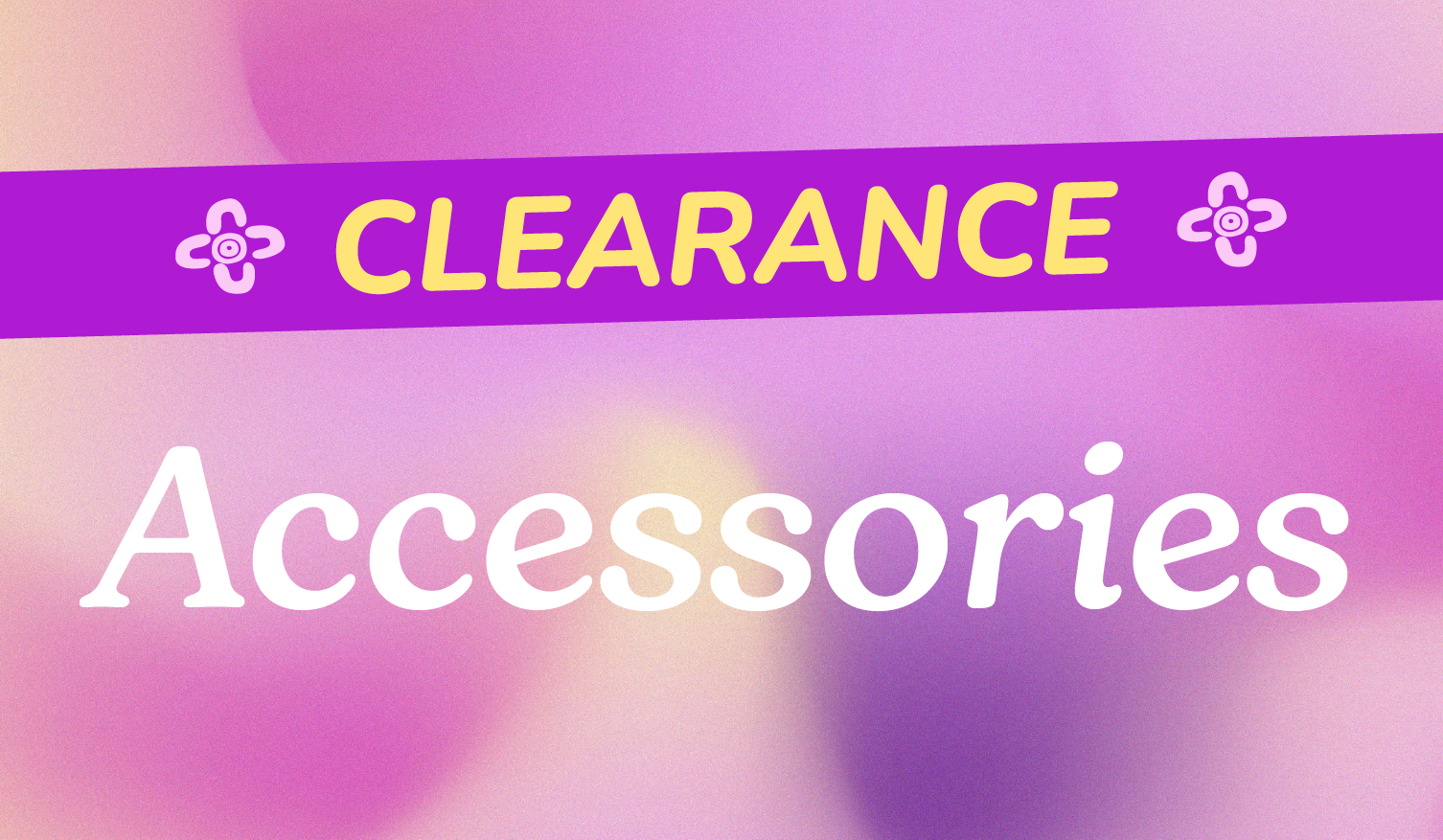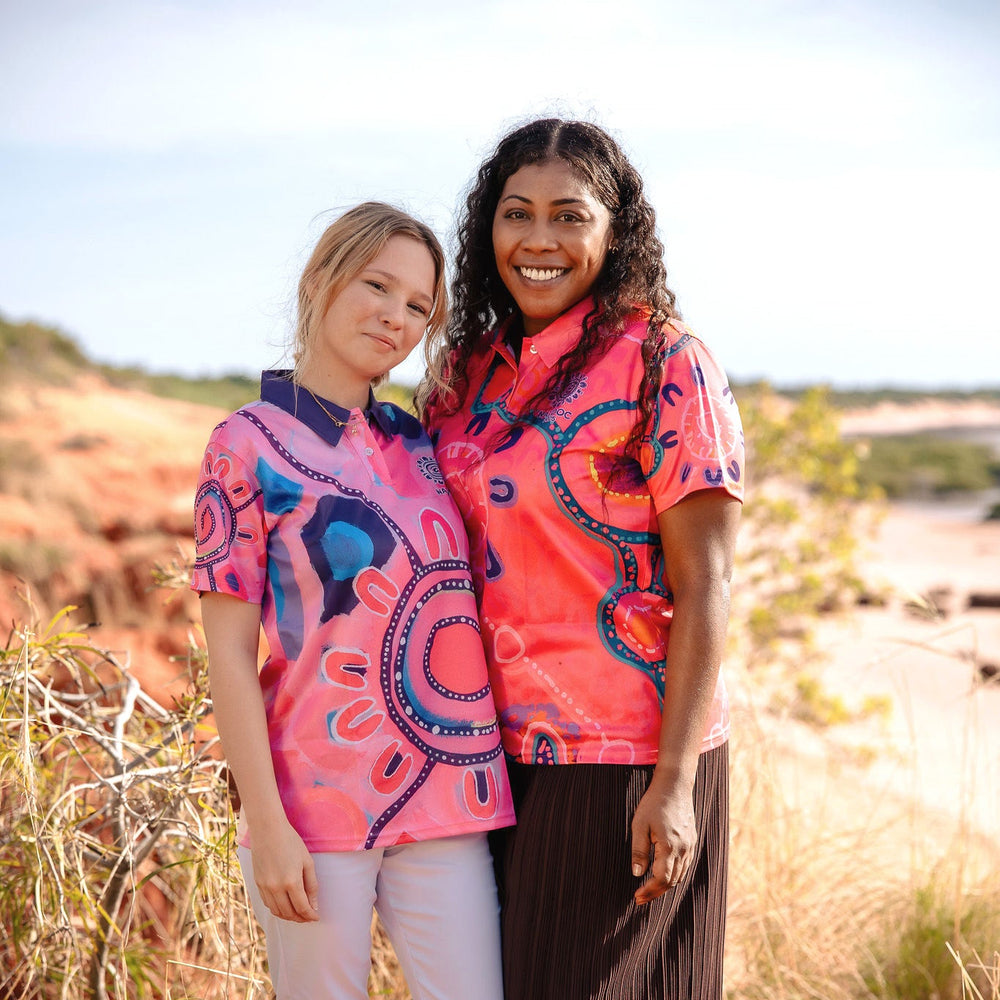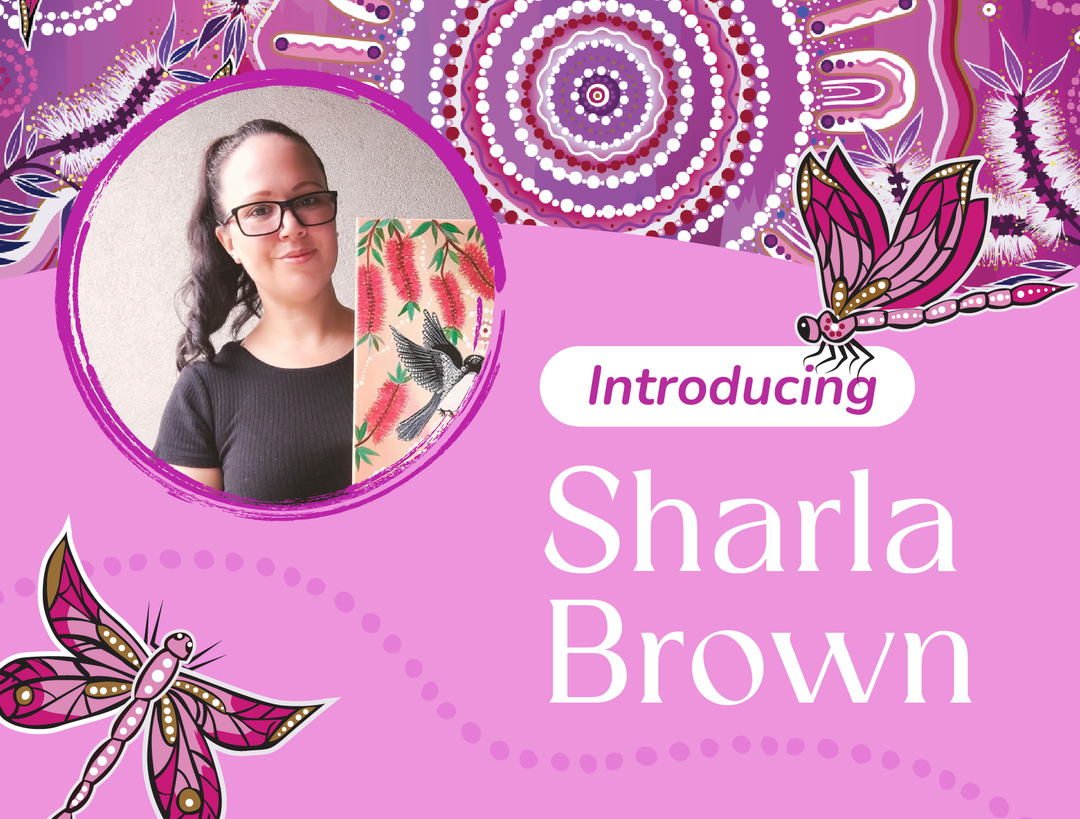Deb Belyea, a proud Samuawgadhalgal woman has made waves in the art world and beyond with her winning NAIDOC 2024 poster artwork, "Urapun Muy" (One Fire). Now, in an industry-first collaboration with BW Tribal, Deb is set to ignite a new conversation about the power of art, fashion, and cultural preservation through her limited edition collection - Marking the first time in history that an official NAIDOC artwork has been commissioned for commercial use.
Join us as we delve into Deb's inspiring journey, from her deep connection to the Cassowary Clan to her groundbreaking partnership with BW Tribal, and discover how her artwork is keeping the fire of Torres Strait Islander culture burning brightly for generations to come.
Can you tell us a bit about Urapun Muy and the inspiration behind it?
"Urapun Muy, means ‘One Fire’, in my language of Kalaw Kawaw Ya, which is a dialect from the top Western Torres Strait Islands. The artwork represents the ongoing maintenance of Aboriginal Peoples’, and Torres Strait Islanders’, culture as part of our cultural responsibility."
How does your Torres Strait Islander heritage influence your art?
"My Torres Strait Islander heritage influences every aspect of my life, and therefore my art practice. This is part of my upbringing through my mum as she showed my sisters and I how to live our lives using Mina Pawa (cultural respect). This is how I live my life today and teach my son how to live. Also, one of the largest cultural influences for me came from a trip overseas in 2013. I was lucky enough to view our old artefacts from the Haddon Collection at Cambridge University, with a small group of students from Tagai State College. We were amazed at our ancestor’s attention to detail and workmanship in these pieces. I was blown away by our traditional art patterns and designs. I try to make reference to these styles in most of my work."
What message do you hope to convey to both Indigenous and non-Indigenous audiences through your artwork?
"I hope to share my Torres Strait Islander culture with everyone, in particular our unique cultural identity and how this influences our everyday lives. I want non-Indigenous people to be proud of our Indigenous culture and understand it well. I hope that this message is shared in my artwork."
What motivated you to approach BW Tribal to release a collection of clothing featuring your artwork?
"I have always supported BW Tribal over the years by purchasing my NAIDOC clothing from them. I try to encourage others to buy from them because not only are they are Queensland company but also they are also 100% Indigenous owned. This makes BW Tribal extra deadly!"
How do you feel about your artwork being used on products for the first time?
"I feel confident that BW tribal customers trust the brand and I’m excited to see my artwork on a range of merchandise for the first time. It means that a lot more people will be learning about our beautiful Torres Strait Islander culture."
What does NAIDOC Week mean to you personally?
"It’s a week where our Aboriginal and Torres Strait Islander cultures are showcased around Australia. We can see our beautiful First Nations cultures, histories, cultural practices, art and dances shared throughout classrooms, workplaces and communities nationwide. It’s here that we do the work for our own children - passing on our cultural practices, and reinforcing our unique identities. For me, it’s about honouring our elders and those that have come before us. We need to remember that this week came from the hard work of our elders, such as those in the Aborigines Advancement League and the Australian Aborigines Progressive Association (AAPA), who had initially pushed for a Day of Mourning in place of Australia Day. This day then became a day of celebration of our rich, First Nations cultures, and was initially celebrated on the first Sunday of July. Now we have a whole week to share our beautiful culture with the world.
As an educator with over 20 years teaching experience, I have seen the positive impact our shared cultures and histories bring to all Australians. All of our children, regardless of their cultural backgrounds, love to learn about and respect one another’s cultures. I want my little boy to grow up with his classmates knowing about our Torres Strait Islander history and our First Nations cultures."
How do you think initiatives like the NAIDOC poster competition and collaborations with companies like BW Tribal contribute to the preservation and promotion of Indigenous culture?
"These initiatives provide a platform to see the representation of our First Nations culture on a national scale; to let our people, and especially young children, know that we are present and that our cultures matter. It also allows for all Australians to read up about NAIDOC posters or buy a shirt and read about the artist and learn about our cultures. These opportunities generate discussions and broaden the general public’s understanding about the unique and diverse cultures of us First Nations mob."
Are there any upcoming projects or collaborations you are excited about?
"I’ve just launched my small business, Zeyawgub Consultancy, where I assist educators to embed First Nations perspectives into the curriculum. I am excited about helping our educators grow their cultural responsiveness and see how our Aboriginal and Torres Strait Islander children see themselves represented in their classroom. I’ve also been producing a lot of artwork this year so I’m feeling excited about the possibilities that may open up with my art too."
How do you see the role of art in maintaining and sharing cultural knowledge and identity in the future?
"Art is such an integral part of our First Nations cultures and takes on many an abstract and multilayered meaning. When audiences take the time to listen to Indigenous Australian artists they then learn about the meanings behind our work,and therefore our culture. As Aboriginal and Torres Strait Islander artists, we are able to practice and maintain our cultural knowledge and pass this on to our children. Art keeps that ‘fire’ burning and makes us Blak, loud and proud."
Can you share more about your journey as an artist and educator?
"I have been a high school teacher for just over 20 years and have a Bachelor of Arts (Visual Arts), Bachelor of Education (Secondary, Humanities) and a Master of Social Science (Indigenous Studies. I am passionate about life long learning and teaching about our First Nations histories and culture. As an educator, I have worked across regional and remote settings in a range of positions from classroom teacher to leadership. I had started out as an Art teacher and Humanities teacher but have somehow ended up teaching English too. I am passionate about embedding our perspectives, as First Nations People, into the classroom. I have seen all students engaged with learning about our rich Aboriginal and Torres Strait Islander cultures but would like to help educators do this by providing a skillset and process. This is why I had decided to set up my consultancy business, Zeyawgub.
As an artist, I struggled to find the time to create art pieces over the years. I had lost my Mum last year and as part of my healing process I would sit and give time to think about her each night as I worked on my art. I feel like I have come back to my art now and won’t let it go. It is such as healing practice and good for the spirit."
How has your connection to the Cassowary Clan and the upper Western Torres Strait islands shaped your artistic expression?
"As a Samuawgadhalgal (member of the Cassowary Clan), we are taught about our cultural identity from a very young age. We say that, as an Islander, there is one thing you get to do as an individual - and that is to choose your clan before you are born. Everything you do after then is through the Mura Buway (larger extended clan) so you become part of a bigger group. My connection to my clan is not just cultural, but also spiritual as I chose to belong to my clan. It is the very foundation of my identity and a source of strength and pride. Belonging to the Samu clan and being of top Western Island descent is central to who I am and I make sure it is always referenced in my artwork."





